“Yesterday, December 7, 1941, a date which will live in infamy, the United States of America was suddenly and deliberately attacked by naval and air forces of the Empire of Japan.”
So began President Franklin Delano Roosevelt’s address to a joint session of Congress on Monday, December 8, 1941. 24 hours had passed since Japanese naval aircraft seemingly obliterated the US Pacific Fleet’s battleship force. The raid sank or grounded 8 American battleships, sank or damaged 10 other ships, and destroyed 169 aircraft, mostly on the ground. Buildings were flattened and bomb craters pocked the airfields’ runways. More importantly, 2,403 Americans died, 1,177 of whom were killed when a direct hit exploded the battleship Arizona’s forward magazine. Another 1,178 people were wounded.
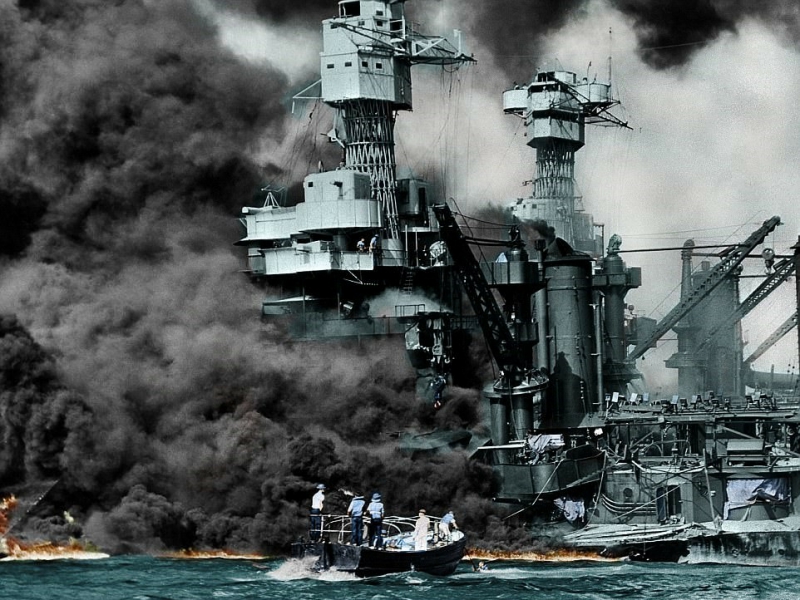
The chaos completely overwhelmed the base medical facilities. Men suffered burns over their entire bodies. One witness described their skin as being like white ash. Bodies were laid out in rows along quays, docks, and parking lots. Many seemed to have no mark on them at all, other than their faces being unusually dark. They were killed by the concussion from massive explosions, rupturing the blood vessels in their heads without breaking the skin.
The broken ships spilled millions of gallons of oil into the harbor. The congealed oil formed a 6-inch-thick surface layer. Hundreds of men jumped or were thrown into the fouled water, oil covering them as they fought for air. Those who made it spit and vomited oil for hours. Even after scrubbing in hot showers, those men reported a petroleum film on their bodies for weeks, making them sick and causing intense headaches.
Everything seemed to be burning. Thick, black smoke clouds billowed thousands of feet high. Shrapnel littered the ground so thickly that men later scooped it up in buckets. And not just shrapnel. Explosions rained body parts onto the ships’ decks and into the water. Survivors later cleared them as best they could.
Acetylene torches flared as civilian shipyard workers attacked the battleship Oklahoma’s capsized hull. Trapped survivors could be heard frantically banging on the metal inside. But the ship’s oil-based paint caught fire, forcing the rescuers to punch through the armored steel using chisel-tipped pneumatic guns. Schematic drawings helped them avoid fuel tanks and magazines. These intrepid men worked non-stop for two days, eventually reaching 32 men who would otherwise have perished. 429 Oklahoma crewmen died.
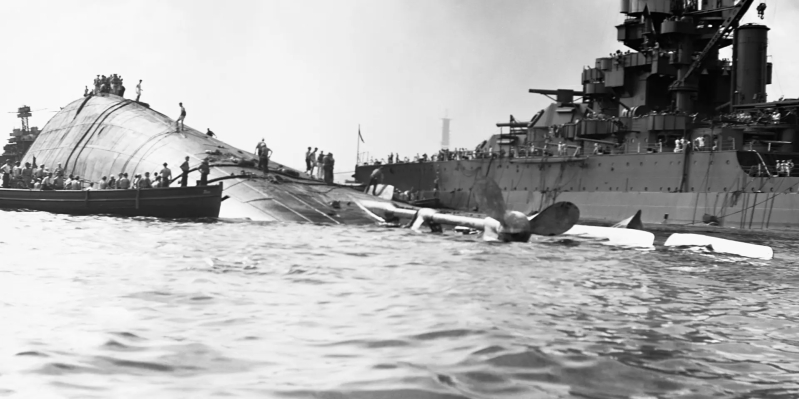
An Apparent Military Disaster
It seemed a normal Sunday morning. The weather was beautiful. Many sailors were ashore, sleeping off their Saturday night liberty in Honolulu. Seven American battleships were moored in a double line along “Battleship Row.” The battleship Pennsylvania lay in the huge drydock just across the water. Cruisers, destroyers, and other ships filled the harbor’s quays. A canopy stretched over the battleship California’s foredeck as the ship’s band played.
Shortly before 8 AM, aircraft engines were heard, but no one paid them much attention. Hickam and Wheeler Fields were nearby, not to mention the naval air station on the harbor’s Ford Island. Planes were always coming and going. A line of dive bombers pushed over, aiming at the battleships, while torpedo bombers skimmed the water toward the same targets.
People saw them but merely remarked on the pilots’ skill, thinking it was just another of the interminable drills or mock attacks. Even those who glimpsed the large red Rising Sun emblem thought the paint jobs were only adding realism. The bombs exploded. The torpedoes hammered home. Brass shell casings rained on the decks and pavement. Things were suddenly very real. An urgent warning was flashed to Washington: “Air raid Pearl Harbor. This is no drill.” That warning was the first word passed to Roosevelt.
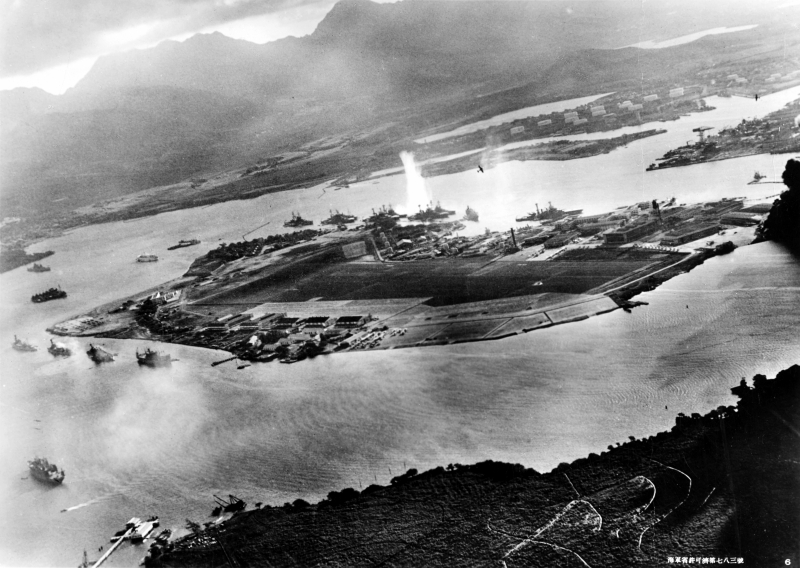
The two waves of Japanese warplanes left Pearl Harbor a fiery, smoking ruin. Every ship on Battleship Row was hit badly, including the Nevada, whose crew got her underway but were forced to ground her to keep from sinking. Arizona’s magazine went up with “a mighty thunderclap of sound, deep and terrible.” The fireball rocketed thousands of feet in the air. Most of her crew died in that instant. West Virginia’s side was ripped open, billowing smoke. Her paint bubbled from the heat. Both ships quickly sank at their moorings. The Oklahoma took several torpedoes below the waterline, rolling over into the harbor’s flaming water.
Sailors and Marines rushed back from Honolulu, piling into whatever transport they could find. Japanese Zeros often strafed them on the road. Rescue boats plied the harbor, plucking oil-covered men from the water. The heat was so intense that many rescue boats caught fire. But they kept at it, their crews dousing the flames as best they could.
Rumors flew that Japanese troops were landing. Sailors and Marines were given rifles and grenades. One sailor’s group was assigned to defend a dock. “You guys stay right here on 10-10 dock,” they were told. “And when the Japanese come in, get as many as you can before they get you.” Other sailors armed themselves with kitchen knives.
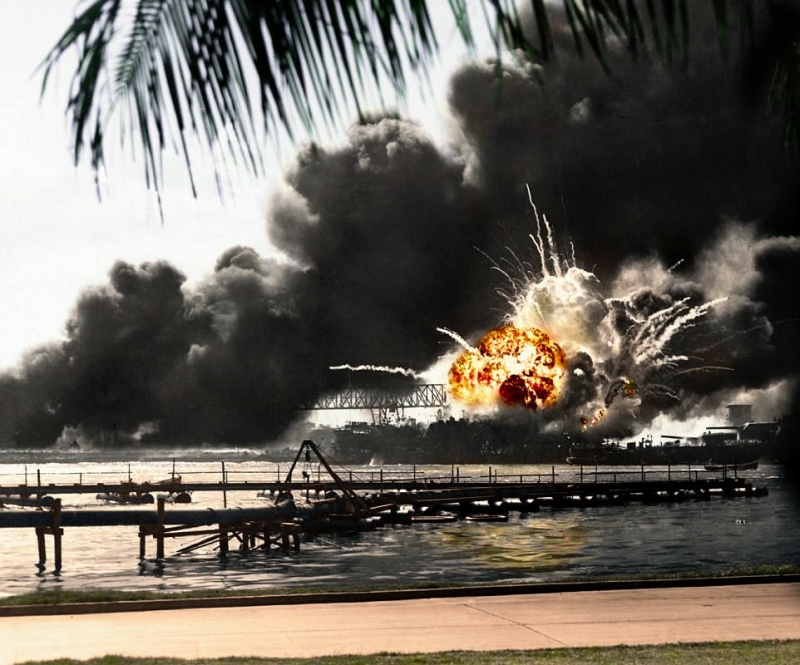
But the Japanese were long gone, a fact that was not apparent for days. False reports of Japanese troops, ships, and planes poured in from across the Hawaiian Islands, adding to the chaos. One persistent rumor had Japanese paratroopers landing somewhere on Oahu, though no one seemed to know quite where.
Japanese losses were relatively light. They lost 29 aircraft and five midget submarines, sunk trying to sneak into the harbor. 64 Japanese servicemen were killed. Pearl Harbor looked to be a mortal blow, and so it was…for Japan.
Tactical Victory…Strategic Defeat
No one who witnessed Pearl Harbor would characterize it as anything but a military defeat, especially at the time. But appearances are often deceiving in the heat of the moment. From a purely military standpoint, Pearl Harbor was a short-term American loss, but it wasn’t the devastating defeat Japan hoped it would be.
The battleships Arizona and Oklahoma were beyond repair, but the Navy quickly raised the others from the harbor’s shallow waters and returned them to service. They went on to fight both the Japanese and Germans. Two battlewagons were already raised and under repair by the time the raiding force returned to Japan. Despite the horrible casualties, most Pacific Fleet sailors survived to man those ships, and the new ones soon headed their way.
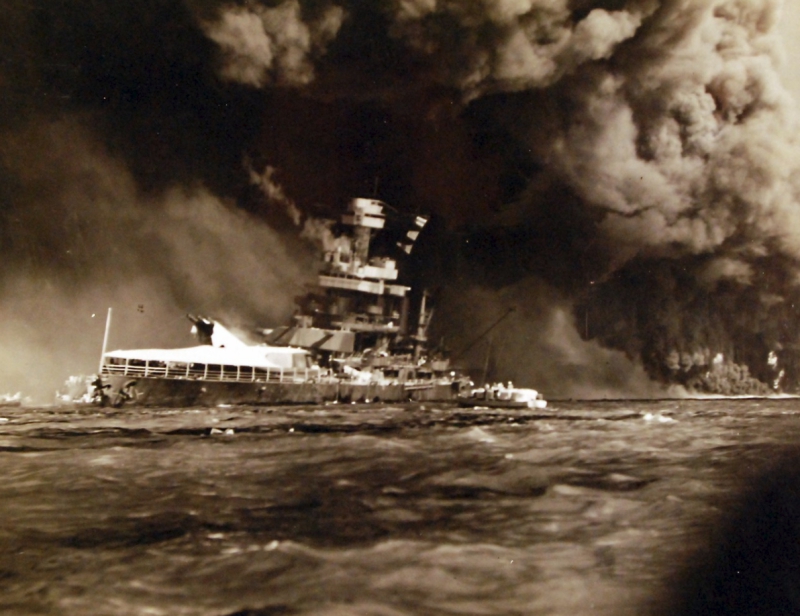
The Japanese also missed the two Pacific Fleet aircraft carriers, both of which were at sea. It soon became apparent that carriers had supplanted battleships as rulers of the waves. In fact, battleships were among the most useless ships in the new war, being mostly employed for shore bombardment and as anti-aircraft platforms. Whenever a carrier targeted a battleship, the battleship lost.
The raiders likewise failed to hit the massive Ford Island tank farm holding all the fleet’s reserve fuel oil, which would have taken months to replace. It would also have added immeasurably to the ecological damage from the fleet’s ruptured fuel tanks. That fuel reserve meant the US Navy launched retaliatory carrier raids almost immediately. But that wasn’t the important part.
Beyond the Battleships
History is replete with short-term victories laying the seeds of eventual strategic, and final, defeat. The battles of Thermopylae, Lexington Green, and the Alamo come to mind. Each of those examples saw one side go down hard, only for their sacrifice to inspire their respective people to fight all the harder toward eventual victory.
Thermopylae led to victory at Salamis and Plataea, but Thermopylae gets more press. The Spartan King Leonidas’ words are commonly spoken 2,500 years later. The Lexington Militia scattered under disciplined British volley fire, but their captain’s defiance sparked the American Revolution. The Alamo was completely overrun, but its defenders inspired the victory at San Jacinto. Everyone has heard of the Alamo, but few know about San Jacinto.
Pearl Harbor is easily the most famous Pacific War battle. People who know nothing of World War II have still heard of Pearl Harbor, even if they don’t know what happened there. That’s because Pearl Harbor created a unified spirit and determination that glowed like a white-hot blade in a blacksmith’s forge. By the time President Roosevelt spoke on December 8, that blade was pointed squarely at Japan’s heart.
A noted historian remarked that by achieving surprise at Pearl Harbor, Japan guaranteed its defeat. The American people would neither countenance nor forgive a treacherous sneak attack in peacetime. As another commentator put it, America’s war against Germany was business. But the fight against Japan was personal.
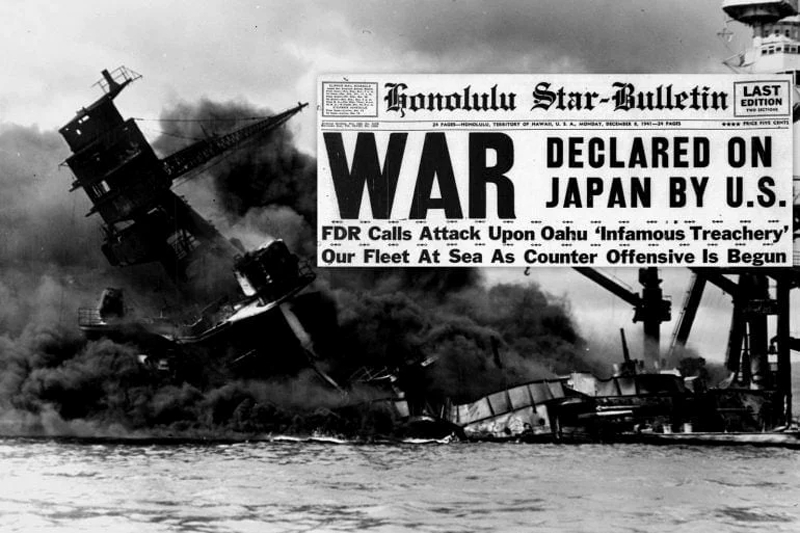
Infamy
President Roosevelt didn’t have all the details when he spoke before Congress on December 8. All he knew was that thousands of Americans were dead and the Pacific Fleet crippled. He also knew the country’s mood. His words were measured and deliberate, as was the word “infamy.” The original draft read, “a date which will live in history.” He later marked out the last word, replacing it with “infamy.” Roosevelt knew his audience.
He spoke barely 500 words to the 60 million radio listeners, but he captured what most Americans felt that day:
But always will our whole Nation remember the character of the onslaught against us. No matter how long it may take us to overcome this premeditated invasion, the American people in their righteous might will win through to absolute victory. I believe that I interpret the will of the Congress and of the people when I assert that we will not only defend ourselves to the uttermost, but will make it very certain that this form of treachery shall never again endanger us.
Those words brought one of several rousing ovations from the packed House Chamber. Roosevelt closed with words that should have chilled every Japanese heart: With confidence in our armed forces, with the unbounding determination of our people, we will gain the inevitable triumph, so help us God. I ask that the Congress declare that since the unprovoked and dastardly attack by Japan on Sunday, December 7, 1941, a state of war has existed between the United States and the Japanese Empire.
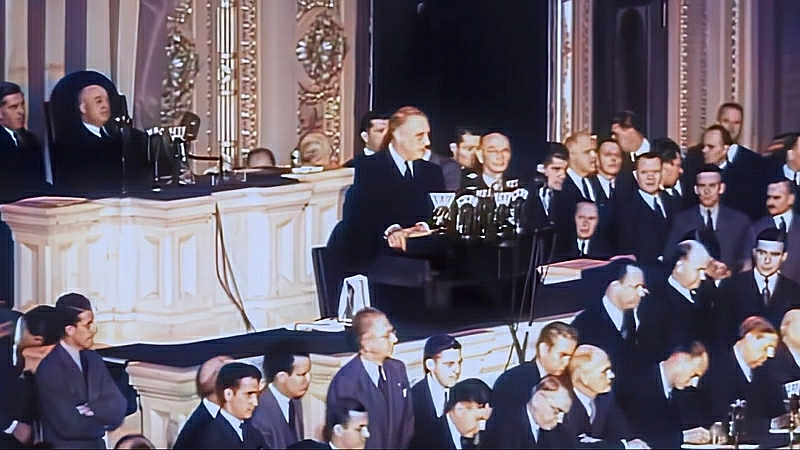
Japan attacked Pearl Harbor thinking that grievous losses at the outset would discourage the United States, making her unwilling to expend blood and treasure to stop Japanese expansion in Southeast Asia and the Western Pacific. Their truly spectacular miscalculation ensured that America would not only hinder that expansion but bring Japan itself to the brink of destruction.
As fine an orator as he was, Franklin D. Roosevelt would never have garnered public support for fighting Japan over the Philippines or the Dutch East Indies. Not even British Hong Kong or Singapore. But a sucker punch from the dark was just the ticket. Japanese Admiral Isoroku Yamamoto is said to have observed after the attack, that “I fear all we have done is to awake a sleeping giant and fill him with a terrible resolve.” Maybe Yamamoto said that and maybe he didn’t. Either way, the sentiment was correct.
British Prime Minister Winston Churchill wrote that hearing of the attack, and its nature, reminded him of what British Foreign Secretary Sir Edward Grey had said about American entry into World War I: “America is like a furnace. Once the fire is lighted under it there is no limit to the power it can generate.” Churchill wrote that he went to bed relieved, knowing that the fates of Imperial Japan and Nazi Germany were now sealed.
Aftermath
Imperial Japan attacked Pearl Harbor 82 years ago today. Both sides paid a terrible price before the war ended on September 2, 1945. As with most wars, we can see how it could have all been avoided. But like all such things, hindsight rules the day.
Americans were likely never as united as they were on December 8, 1941. The Senate voted unanimously to declare war on Japan. The House had one dissenting vote from a Congresswoman who was a passionate and devoted pacifist. She had also voted against entering World War I in 1917. I don’t say that to disparage her. I admire her principles, even if I disagree with her vote.
Recruiting offices were mobbed as men signed on to fight the war. There were so many volunteers that many were told to come back later. The public endured rationing of food, gasoline, tires, and many other commodities deemed necessary for the war effort. Some grumbling was inevitable, but all knew why it was necessary. Women left their homes and joined the workforce to free up men for the armed forces. That may sound odd today, but it was the 1940s. Many women worked as secretaries or receptionists, but now they signed on as factory workers or welders. “Rosie the Riveter,” flexing her bicep, became a common sight.
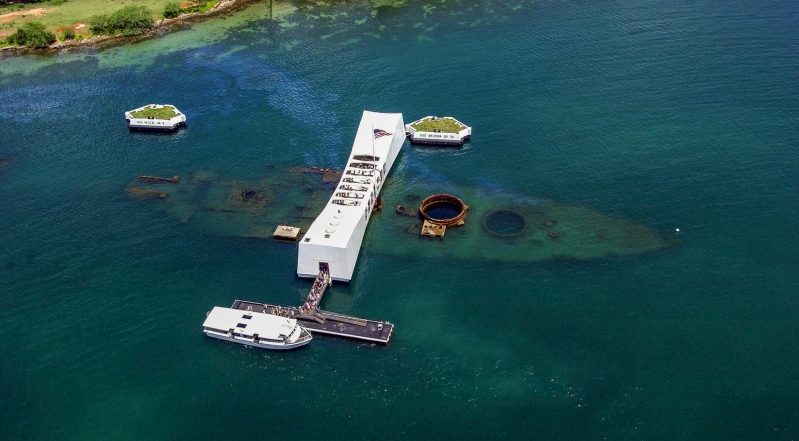
The battleship Arizona was never raised. It’s now a memorial site in Pearl Harbor. Over 900 men are still entombed within her steel hull. World War II memorials abound throughout the United States. It’s often described as “the last good war,” since there was no doubt about why we were fighting it. I visited Hawaii as a teenager. Even then I was a keen student of World War II, so Pearl Harbor was a must. We also went to Punchbowl National Cemetery, where we witnessed a Japanese naval delegation laying a wreath on the mass grave of unknown American dead from Pearl Harbor.
Never Forget
In the worst of times, Americans were at their best. I’m a historian. I study this stuff professionally and for fun and have done so since I was a kid. That’s over 50 years. In that time, I’ve only witnessed one event that approached Pearl Harbor’s effect on Americans. That was September 11, 2001.
I don’t need to rehash what happened that day, but I remember the aftermath very well. People were scared. I remember observing folks looking nervously at the sky, just as many did right after Pearl Harbor. I also remember people lined up to give blood. I was among them. Lines were so long that many were told to come back later, just as they were in 1941. People were nicer to each other. More courteous. Our petty differences really did seem petty after all. And we were angry.
Where “Remember Pearl Harbor” was the cry sixty years before, we all remembered the New York Police and Fire Departments. We honored the passengers who fought back on doomed Flight 93, because they did what Americans do. And we mourned the victims of another “unprovoked and dastardly attack.” Americans have never appreciated treachery and our righteous anger burned hot. But the important part was that we burned hot together.
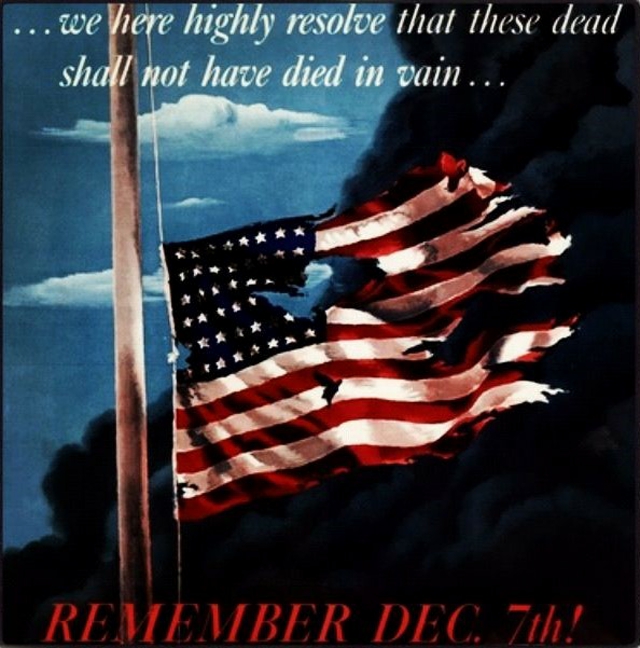
It didn’t last, of course. There are many reasons for that, many of them quite valid. It’s a shame that it often takes an immense and sudden tragedy to unite us in our best selves. We fight over trivial things. We alienate our families and friends over the most inconsequential issues. It’s rather appalling if you think about it, and I’m as guilty as anyone.
So, today, consider thinking about what happened on December 7, 1941. Or September 11, 2001. If you’re old enough to remember it, think about how you felt. Not just your anger, but how it made you look at your fellow Americans. Maybe try to internalize that before turning on your favorite divisive media outlet. Because, as the man says in one of my favorite movies, “It is the doom of men that they forget.”


